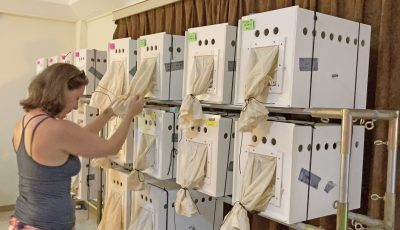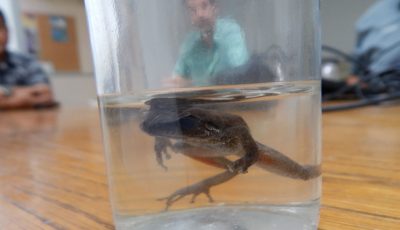DFW gets over $400K to expand Tinian monarch studies
The University of Guam awarded the CNMI Division of Fish and Wildlife a subgrant of over $400,000 to conduct further research on the Tinian monarch.
The Tinian monarch, although endemic to the island of Tinian, is a species of bird that still remains a bit of a mystery.
According to CNMI Division of Fish and Wildlife supervisor Jill Liske-Clark, the division recently received $410,000 to conduct a study on the Tinian monarch.
“…It’s a really large sum of money for us,” she said.
Liske-Clark said the money would give the division the opportunity to obtain more information about the Tinian monarch and it would also aid in gathering data about the current population of birds on Tinian.
“We’ll learn just a lot more in detail about the Tinian monarch because not a lot is known about it, so it’s going to be a great opportunity to really learn in detail what it needs and where it live. …It’s going to fund some islandwide surveys that will allow us to see…how the forest bird populations are doing on Tinian,” she said.
The only information known about the Tinian monarch is that it is a small flycatcher bird that is about 15 centimeters (6 inches) from bill to tail. Tinian monarchs are dull with light rufous underparts, olive-brown upperparts, and dark chocolate brown wings and tail.
The Tinian monarch lives mainly in forested habitat where it shelters, breeds, and forages for insects. There are various types of forest on Tinian, including native limestone, secondary-mixed, and nonnative tangan tangan forest, all of which are inhabited by the monarch. Individuals breed year-round, beginning at about two years of age and live around 10 years.
The Tinian monarch was nearly listed on the U.S Endangered Species Act list but findings by the U.S Fish and Wildlife Service determined that the bird is thriving on Tinian.
According to a summary of the findings, the U.S Fish and Wildlife evaluated all relevant factors to determine whether there was warrant to list the Tinian monarch as an endangered species. The five factors evaluated include present or threatened destruction, modification, or curtailment of its habitat or range; overutilization for commercial, recreational, scientific, or educational purposes; disease or predation; the inadequacy of existing regulatory mechanisms; or other natural or manmade factors affecting its existence.
The evaluation found that potential stressors of the Tinian monarch include the invasive brown tree snake and civilian and military development on the island. Fortunately, precautions taken to prevent brown tree snakes have been efficiently working and Tinian’s forest has proven its resiliency over the years.



























